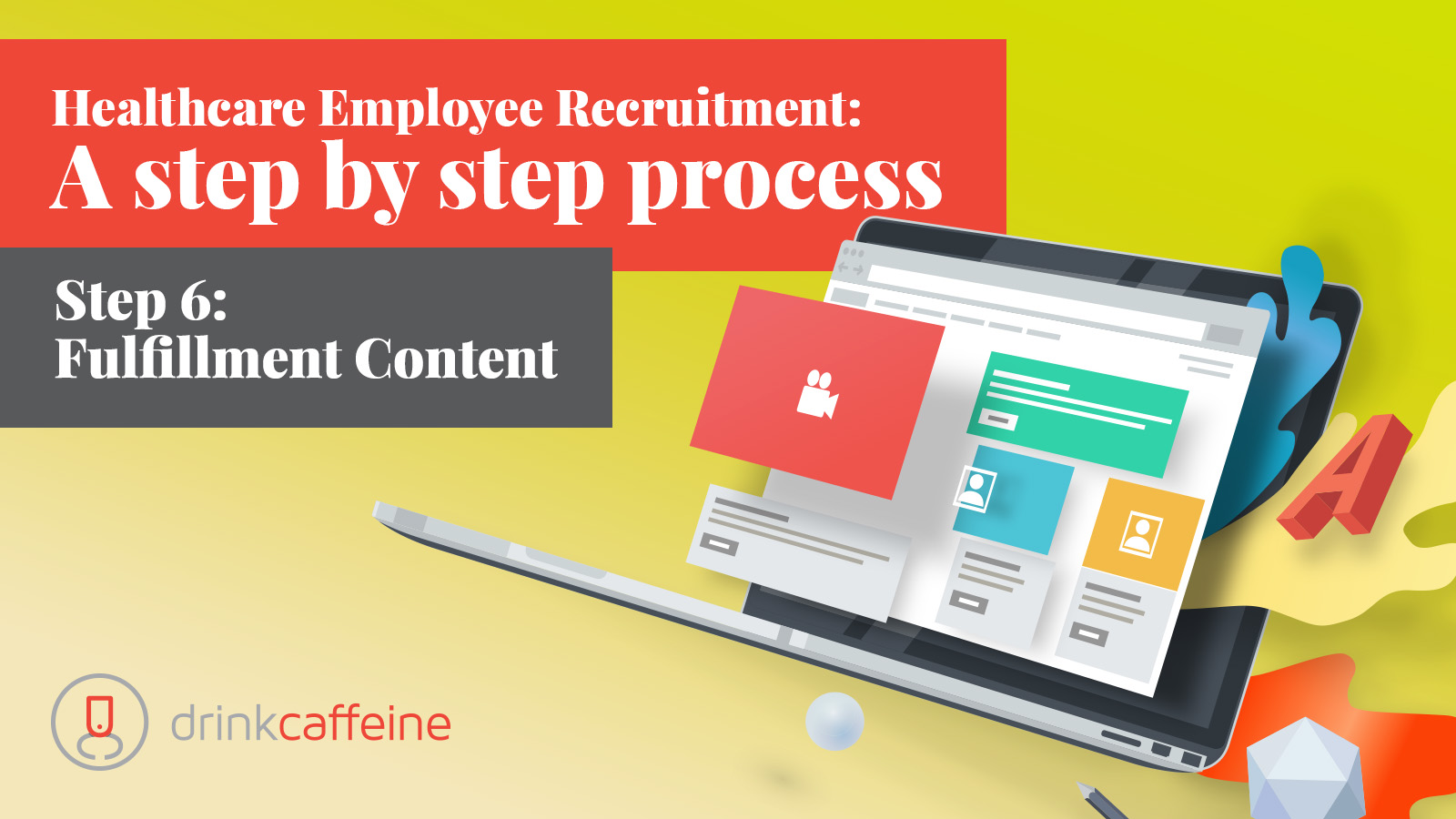When potential employees start looking at you, be ready with content that engages them.
Prospective employees at all levels investigate job opportunities by looking for meaningful content: Videos, white papers, provider interviews, patient profiles, and more.
In Step 6 we address content planning and strategy for the Persona targets you attract with your recruitment program.
Content Planning: Showcasing your appeal as an employer
It starts with a Content Calendar, but content planning requires you to examine your organization to determine where content can be curated and formatted for employee recruitment. Every organization is different, but here’s an overview of the action steps you should consider.
Content Calendar: To keep your efforts organized
This is simply a month-by-month schedule for topics, targets, and distribution channels.
It should include:
- Content for all Persona types
- Specific stories, articles, videos, etc appropriate for each Persona. Examples: More sophisticated clinical content (white papers, outcome studies) for experienced professionals. Introductory content (About us, What to expect) for younger potential employees.
- Specific channels of distribution. You can use the PESO model of media for structure. Paid (advertising). Earned (Public Relations). Shared (Social) and Owned (Website, facilities, email)
Mission, Values, Culture, and DEI content: To tell your story
- When talent is considering you as an employer, they want to know what it’s like to work there.
- Develop statements about your Mission. Pinpoint the goals that drive you forward.
- Define Values. Even if your Values are not unique, state them anyway. Examples: Clinical Quality. Integrated Care. Patient-Centered Care. Compassion. Accountability. Go back to your Employer Brand Pillars for input and inspiration.
- Define Culture. Explain in detail the work environment. Identify its attributes: Support, Collaboration, Freedom, are Advancement are a few examples.
- Diversity, Equity and Inclusion. DEI matters. If you don’t have employee stories and carefully detailed policies in place, simply state your respect for and belief in the value of DEI.
Thought leadership: To position your organization as a leading voice
- Evidence-based articles. Optimally, you will develop your own clinical or scientific articles or outcome studies from within. NOTE: It can be helpful to conduct an internal audit (via email) of existing material that employees and leaders may already have.
- Curated research. Search for clinical research studies in your organization’s are(s) of expertise. You can condense it, repurpose it, and brand it to demonstrate your involvement with evidence-based content to potential employees.
- Blogs. Start with a modest schedule; blogging takes time. However, you can solicit guest blogs from colleagues as a way of accelerating the process. We often counsel clients to wait until a content marketing program is up and running before attempting to develop a blog.
Leadership profiles: To promote your brain trust
- Short-format profiles. Very few healthcare organizations take the time to showcase their leadership, whether it’s clinical, strategic, administrative, or otherwise. Consider short biographical sketches of key personnel, combined with a simple quote based on an outlook or perspective they have.
- Interviews. An audio, video, or written interview with a leader can turn your organization inside out and make a potential employee feel more connected.
Employee Spotlights: To promote your managers and workers
- A Day in the Life. A simple chronology of a worker’s daily life can make prospects feel more knowledgeable about their decision to work for you.
- 5 Questions. We have had success with short-format Q&A articles (combined with a photograph and posted to the website). They seem to engage both existing employees (who like the morale boosting aspect of being recognized), as well as prospects.
- Zoom videos. Zoom video can be recorded and edited into short (2 minute) segments that reveal the thoughts and perspectives of existing employees. These videos can be accessed by recruitment targets through social posts, ads, and job listings.
Social content: To maintain steady contact with followers
- Write a social post for each form of content you produce (according to your Content Calendar) and link from post to content. Craft the post based on the essence of the content and what its interest or value is to the target.
Content Distribution: Getting the word out
There are many ways to distribute recruitment content. Your mix will be determined by objectives, strategies, and budget. But here’s a short list of channels that have proven effective for our clients.
- Job Fairs. While they are labor-intensive, the right job fairs can put you next to qualified candidates. Use the content you develop (brochures, video, profiles, etc) to provide foot traffic with the information they need.
- Persona-specific landing pages. Within your website there should be multiple landing pages established for different Persona types. Each landing page should feature data fields for contact information capture, links to deeper content forms, and a summary of the Employer Value Proposition.
- Enhanced social profiles. Within social media platforms there are opportunities to enhance your profile as an employer, with new content that you can source from your content deck: Photos, articles, videos, and so forth. Be prepared to pay extra.
- Branded Job Boards. Sites such as Indeed allow you to enhance job postings with the same type of content described in the previous bullet. Again, there’s an additional cost but consider how much effort it takes to cultivate a lead. The extra investment is important to keep the prospect moving toward application.
- Paid Media. While advertising is necessary to outreach, digital ads will provide you with better targeting and less waste than traditional ads (TV, radio, print, outdoor). Targeting and messaging will be determined by Persona types – demographic and psychographic and lookalike criteria will inform the digital environments where your ads appear – social platforms, websites, streaming video, audio, and so forth.
- Community engagement. Even in the digital age, there’s value in local visibility. Consider speaking engagements and sponsorships with religious and civic groups, sports teams and events, music performances, and seasonal festivals and fairs.
Estimated timeframe for content creation: 4-6 weeks, then ongoing
Get ready for Step 7: Optimization
When you’re ready to use data to solve healthcare communications problems, contact us.


